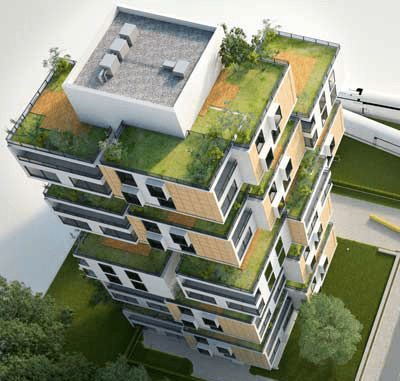Jay Dhariwal
Indian Institute of Technology Delhi, New Delhi, India
Corresponding Author: jay@design.iitd.ac.in
Sonal Gangrade
Indian Institute of Technology Delhi, New Delhi, India
Cite this article
Dhariwal, J., Gangrade, S(2024). Learnings from Thermal Comfort Adaptation of Jain Ascetics During Heat Waves. In Proceedings of Energise 2023- Lifestyle, Energy Efficiency, and Climate Action, pp 290-299, Alliance for an Energy Efficient Economy. https://doi.org/10.62576/DXWV7235
Highlights
- Severe heat waves are affecting a large vulnerable population in India, impacting their health and well-being.
- The Jain monks and nuns in India have been leading their lives without electricity use for hundreds of years.
- This study went beyond the India Model for Adaptive Comfort range for indoor operative temperatures.
- 90% of the surveyed subjects expressed acceptability of the thermal conditions in the strong heat stress range. of UTCI
- Improved adaptive thermal comfort range can help bring down the cooling related energy consumption significantly.
Abstract
Climate change is leading to severe heat waves in India, affecting a large vulnerable population and impacting their health and well-being. The recent adaptive thermal comfort research for Indian climates suggested that the people living in residential buildings can adapt to indoor temperatures upto 35 ℃. The Jain ascetics in India have been leading their life without the use of electricity for hundreds of years, irrespective of the temperatures. In this study, thermal comfort surveys with 20 monks and nuns were carried out during summer for the composite climate of Delhi. 90% of the subjects expressed acceptability of the thermal conditions while the indoor operative temperatures varied between 35 ℃ and 40 ℃. This study should offer hope to people globally that if we can gradually adapt to the rising temperatures, we may be able to move on with our lives without affecting our comfort or health.
References
- GFDRR, “Climate Investment Opportunities in India’s Cooling Sector,” World Bank. Available: https://www.gfdrr.org/en/publication/climateinvestment-opportunities-indias-cooling-sector#:~:text=Unlocking%20opportunities%20to%20create%20a,as%20well%20as%20food%20products
- P. Fanger, “Calculation of Thermal Comfort, Introduction of a Basic Comfort Equation,” ASHRAE Trans. 73, 1967.
- G. Brager, “The Energy/Comfort Nexus – making buildings work for people and the planet,” MITEI. Available: https://energy.mit.edu/wpcontent/uploads/2017/03/Gail-Brager-The-Energy-Comfort-Nexus.pdf.
- United Nations Sustainable Development, “Goal 12: Ensure sustainable consumption and production patterns,” United Nations. Available: https://sdgs.un.org/goals/goal12.
- C. S. Solanki, “AMG (Avoid-Minimize-Generate) Award,” Energy Swaraj Foundation. Available: https://energyswaraj.org/Actions
- Muni Sheelgun Vijayji, “Ahimsa Vrat ,” Available: https://medium.com/muni-speaks/ahimsa-vrat-cbcbc196598e
- William J. Cromie, “Meditation changes temperatures,” The Harvard Gazette. Available: https://news.harvard.edu/gazette/story/2002/04/meditation-changes-temperatures/#:~:text=During%20visits%20to%20remote%20monasteries,as%20much%20as%2017%20degrees
- O. Muzik, K. T. Reilly, V. A. Diwadkar, “Brain over body-A study on the willful regulation of autonomic function during cold exposure,” NeuroImage, vol. 172, pp. 632-641, 2018. https://doi.org/10.1016/j.neuroimage.2018.01.067
- International Standard Organization, ISO 7730: 2005. “Ergonomics of the Thermal Environment-Analytical Determination and Interpretation of Thermal Comfort Using Calculation of the PMV and PPD Indices and Local Thermal Comfort Criteria,” ISO. 2005.
- ANSI/ASHRAE Standard 55-2017, “Thermal Environmental Conditions for Human Occupancy,” Available: ashrae.org/technology.2017
- E. Halawa and J. van Hoof, “The adaptive approach to thermal comfort: A critical overview,” Energ. Buildings, vol. 51, pp. 101-110, 2012. https://doi.org/10.1016/j.enbuild.2012.04.011.
- R. de Dear and G. S. Brager, “Developing an adaptive model of thermal comfort and preference, ” ASHRAE RP-884. 1997.
- S. Manu, Y. Shukla, R. Rawal, L. E. Thomas, and R. de Dear, “Field studies of thermal comfort across multiple climate zones for the subcontinent: India Model for Adaptive Comfort (IMAC),” Build. Environ., 98, 55-70. 2016. https://doi.org/10.1016/j.buildenv.2015.12.019.
- R. Rawal, Y. Shukla, V. Vardhan, S. Asrani, M. Schweiker, R. de Dear, V. Garg, J. Mathur, S. Prakash, S. Diddi, S.V. Ranjan, A. N. Siddiqui, and G. Somani, “Adaptive thermal comfort model based on field studies in five climate zones across India,” Build. Environ., vol. 219, 2022. https://doi.org/10.1016/j.buildenv.2022.109187.
- M. Goermer, A. Lehmann, M. Finkbeiner, “Life-LCA: assessing the environmental impacts of a human being-challenges and perspectives,” Int. J. LCA., vol. 25, no. 1, pp. 141-156. 2020. https://doi.org/10.1007/s11367-019-01645-3
- F. Tartarini, S. Schiavon, T. Cheung and T. Hoyt, “CBE Thermal Comfort Tool: Online tool for thermal comfort calculations and visualizations,” SoftwareX. Volume 12, July-December 2020. https://doi.org/10.1016/j.softx.2020.100563
- UTCI, “UTCI calculator,” Available: http://www.utci.org/utcineu/utcineu.php
- Wikipedia, “Sthanakvasi,” Available: https://en.wikipedia.org/wiki/Sth%C4%81nakav%C4%81s%C4%AB
- M. Indraganti, J. Lee, H. Zhang, and E. A. Arens, “Thermal adaptation and insulation opportunities provided by different drapes of Indian saris,” Archit. Sci. Rev., 58(1), 87-92. 2015. https://doi.org/10.1080/00038628.2014.976540

 Bishal Thapa
Bishal Thapa





 Fred Sherman
Fred Sherman Sumedha Malaviya
Sumedha Malaviya Satish Kumar
Satish Kumar












 The three main global energy concerns of providing access to modern energy, enhancing the security of the energy supply, and minimising the impact of energy systems on the climate have an impact on both national and international energy governance. To develop solutions that address the many facets of these difficulties, however, a variety of actors and stakeholders must be included due to the complexity of the energy challenges.
The three main global energy concerns of providing access to modern energy, enhancing the security of the energy supply, and minimising the impact of energy systems on the climate have an impact on both national and international energy governance. To develop solutions that address the many facets of these difficulties, however, a variety of actors and stakeholders must be included due to the complexity of the energy challenges. Cities are responsible for more than 70% of the world’s energy consumption and 40% to 50% of its greenhouse gas emissions. Managing increasing urbanisation is a challenge, and nations must deal with the effects it will have on the environment in terms of energy and climate.
Cities are responsible for more than 70% of the world’s energy consumption and 40% to 50% of its greenhouse gas emissions. Managing increasing urbanisation is a challenge, and nations must deal with the effects it will have on the environment in terms of energy and climate. Our transition to a future with lower carbon emissions depends heavily on buildings. They are our places of residence, rest, and employment; they also account for around one-third of the world’s greenhouse gas emissions and nearly 40% of the world’s energy usage.
Our transition to a future with lower carbon emissions depends heavily on buildings. They are our places of residence, rest, and employment; they also account for around one-third of the world’s greenhouse gas emissions and nearly 40% of the world’s energy usage.